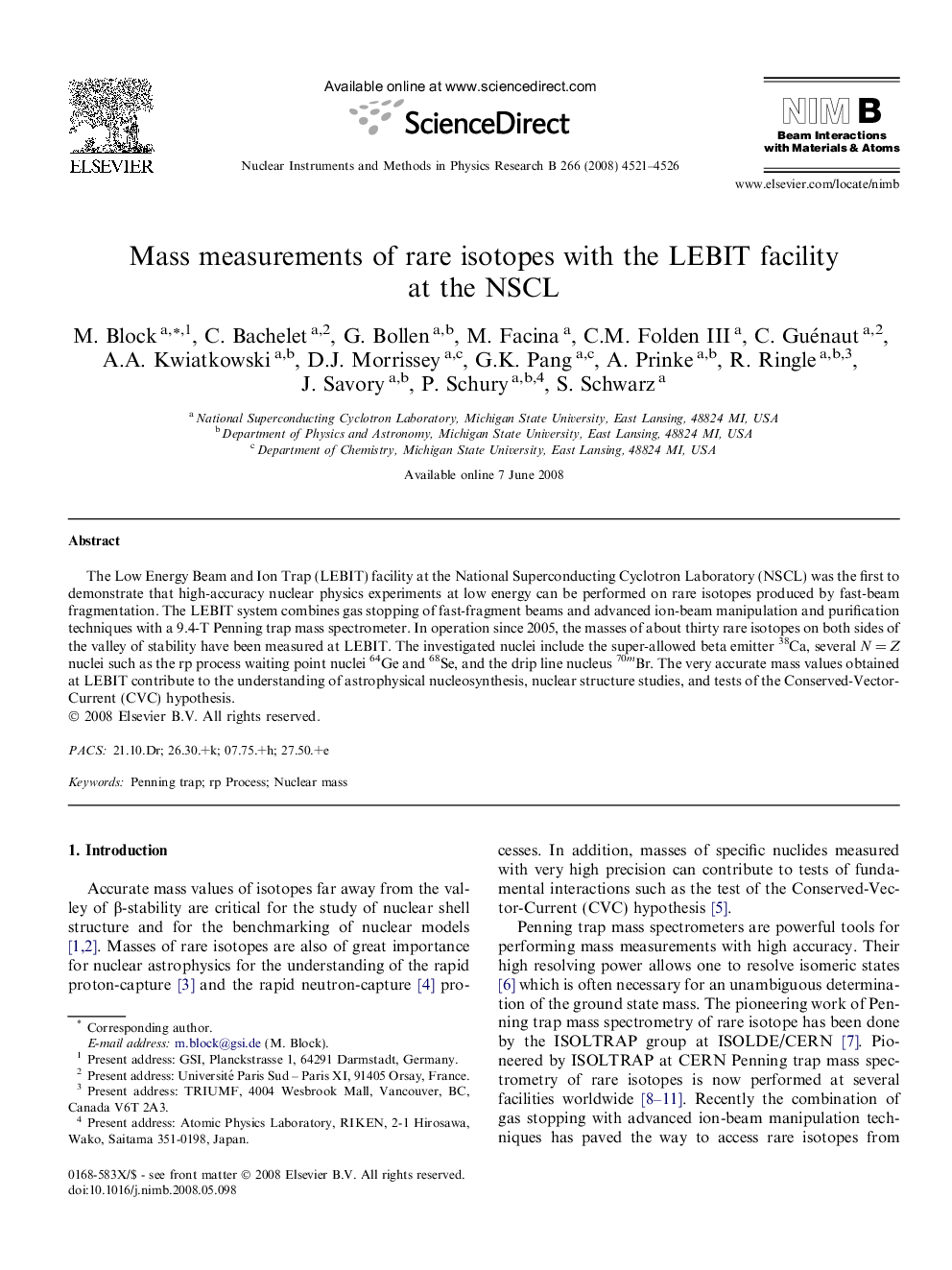| Article ID | Journal | Published Year | Pages | File Type |
|---|---|---|---|---|
| 1687498 | Nuclear Instruments and Methods in Physics Research Section B: Beam Interactions with Materials and Atoms | 2008 | 6 Pages |
The Low Energy Beam and Ion Trap (LEBIT) facility at the National Superconducting Cyclotron Laboratory (NSCL) was the first to demonstrate that high-accuracy nuclear physics experiments at low energy can be performed on rare isotopes produced by fast-beam fragmentation. The LEBIT system combines gas stopping of fast-fragment beams and advanced ion-beam manipulation and purification techniques with a 9.4-T Penning trap mass spectrometer. In operation since 2005, the masses of about thirty rare isotopes on both sides of the valley of stability have been measured at LEBIT. The investigated nuclei include the super-allowed beta emitter 38Ca, several N = Z nuclei such as the rp process waiting point nuclei 64Ge and 68Se, and the drip line nucleus 70mBr. The very accurate mass values obtained at LEBIT contribute to the understanding of astrophysical nucleosynthesis, nuclear structure studies, and tests of the Conserved-Vector-Current (CVC) hypothesis.
